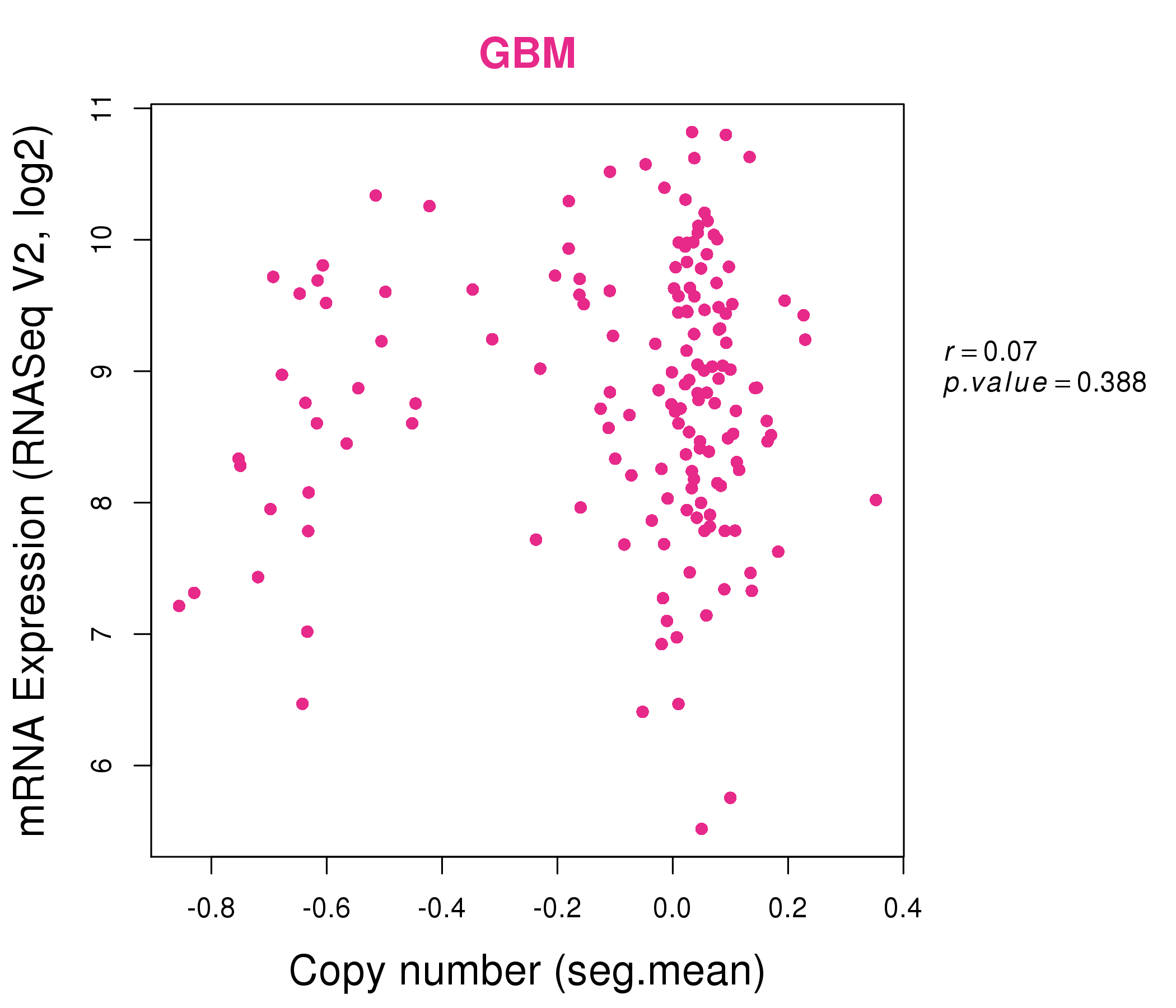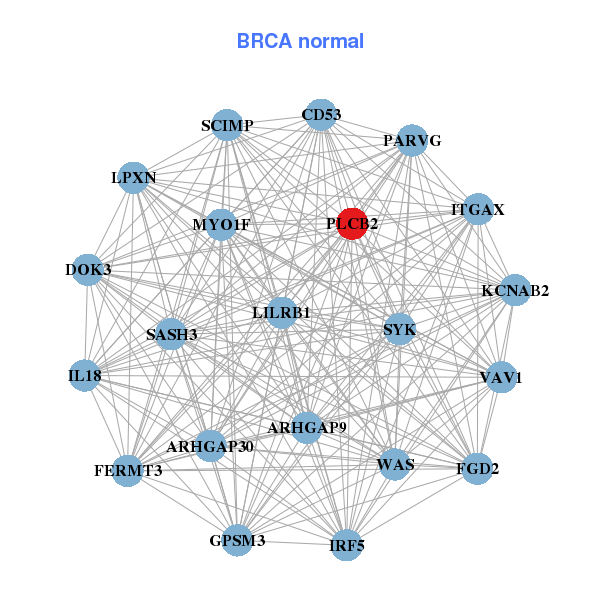|
||||||||||||||||||||
| |
| Phenotypic Information (metabolism pathway, cancer, disease, phenome) |
| |
| |
| Gene-Gene Network Information: Co-Expression Network, Interacting Genes & KEGG |
| |
|
| Gene Summary for PLCB2 |
| Top |
| Phenotypic Information for PLCB2(metabolism pathway, cancer, disease, phenome) |
| Cancer | CGAP: PLCB2 |
| Familial Cancer Database: PLCB2 | |
| * This gene is included in those cancer gene databases. |
|
|
|
|
|
| . | ||||||||||||||
Oncogene 1 | Significant driver gene in | |||||||||||||||||||
| cf) number; DB name 1 Oncogene; http://nar.oxfordjournals.org/content/35/suppl_1/D721.long, 2 Tumor Suppressor gene; https://bioinfo.uth.edu/TSGene/, 3 Cancer Gene Census; http://www.nature.com/nrc/journal/v4/n3/abs/nrc1299.html, 4 CancerGenes; http://nar.oxfordjournals.org/content/35/suppl_1/D721.long, 5 Network of Cancer Gene; http://ncg.kcl.ac.uk/index.php, 1Therapeutic Vulnerabilities in Cancer; http://cbio.mskcc.org/cancergenomics/statius/ |
| KEGG_INOSITOL_PHOSPHATE_METABOLISM REACTOME_INTEGRATION_OF_ENERGY_METABOLISM | |
| OMIM | |
| Orphanet | |
| Disease | KEGG Disease: PLCB2 |
| MedGen: PLCB2 (Human Medical Genetics with Condition) | |
| ClinVar: PLCB2 | |
| Phenotype | MGI: PLCB2 (International Mouse Phenotyping Consortium) |
| PhenomicDB: PLCB2 | |
| Mutations for PLCB2 |
| * Under tables are showing count per each tissue to give us broad intuition about tissue specific mutation patterns.You can go to the detailed page for each mutation database's web site. |
| - Statistics for Tissue and Mutation type | Top |
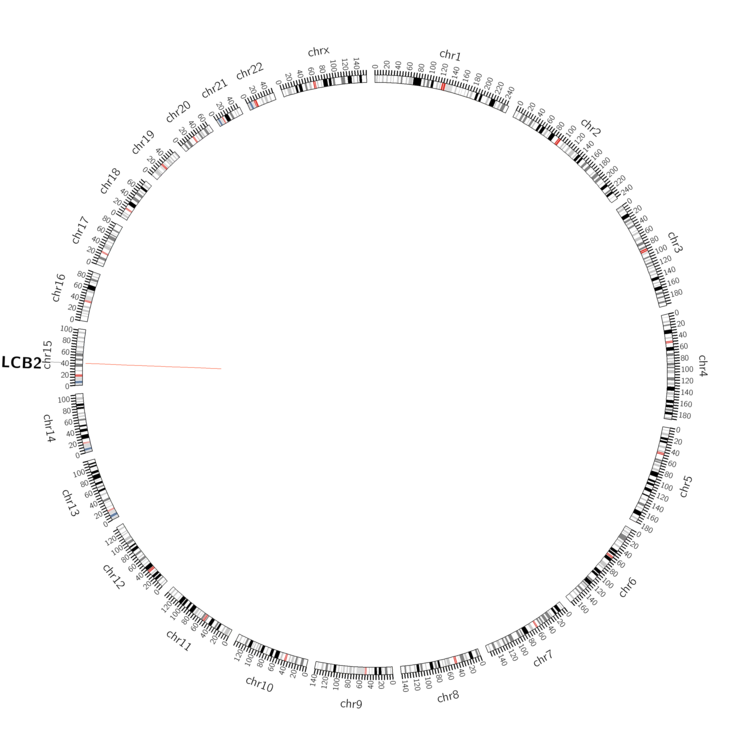 |
| - For Inter-chromosomal Variations |
| There's no inter-chromosomal structural variation. |
| - For Intra-chromosomal Variations |
| * Intra-chromosomal variantions includes 'intrachromosomal amplicon to amplicon', 'intrachromosomal amplicon to non-amplified dna', 'intrachromosomal deletion', 'intrachromosomal fold-back inversion', 'intrachromosomal inversion', 'intrachromosomal tandem duplication', 'Intrachromosomal unknown type', 'intrachromosomal with inverted orientation', 'intrachromosomal with non-inverted orientation'. |
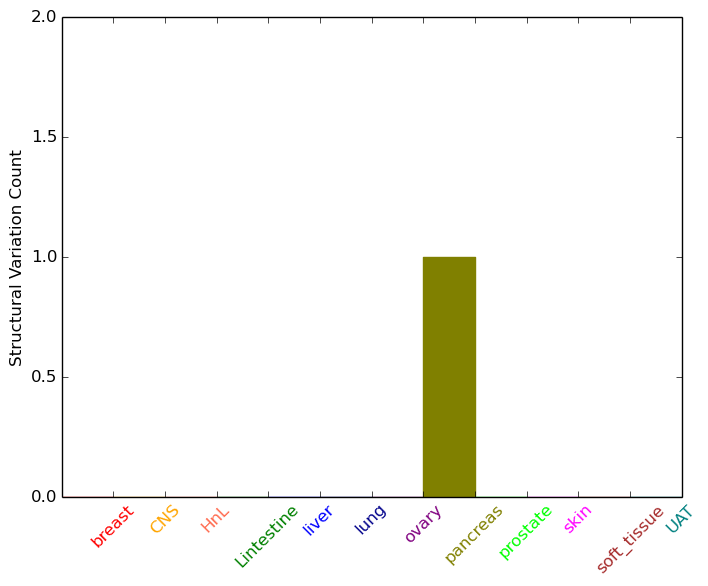 |
| Sample | Symbol_a | Chr_a | Start_a | End_a | Symbol_b | Chr_b | Start_b | End_b |
| pancreas | PLCB2 | chr15 | 40600138 | 40600158 | chr15 | 40600738 | 40600758 |
| cf) Tissue number; Tissue name (1;Breast, 2;Central_nervous_system, 3;Haematopoietic_and_lymphoid_tissue, 4;Large_intestine, 5;Liver, 6;Lung, 7;Ovary, 8;Pancreas, 9;Prostate, 10;Skin, 11;Soft_tissue, 12;Upper_aerodigestive_tract) |
| * From mRNA Sanger sequences, Chitars2.0 arranged chimeric transcripts. This table shows PLCB2 related fusion information. |
| ID | Head Gene | Tail Gene | Accession | Gene_a | qStart_a | qEnd_a | Chromosome_a | tStart_a | tEnd_a | Gene_a | qStart_a | qEnd_a | Chromosome_a | tStart_a | tEnd_a |
| BF893068 | PLCB2 | 3 | 347 | 15 | 40584336 | 40585879 | JUP | 342 | 404 | 17 | 39919423 | 39919485 | |
| DA468797 | LTBP2 | 1 | 337 | 14 | 75038461 | 75038796 | PLCB2 | 333 | 550 | 15 | 40583313 | 40583530 | |
| AK095454 | LTBP2 | 1 | 337 | 14 | 75038461 | 75038796 | PLCB2 | 333 | 1974 | 15 | 40580109 | 40583530 | |
| BF874520 | PLCB2 | 35 | 207 | 15 | 40585851 | 40586565 | PLCB2 | 201 | 530 | 15 | 40586570 | 40588564 | |
| N69137 | INS-IGF2 | 4 | 199 | 11 | 2150350 | 2150546 | PLCB2 | 186 | 431 | 15 | 40593197 | 40593448 | |
| N69126 | INS-IGF2 | 4 | 199 | 11 | 2150350 | 2150546 | PLCB2 | 186 | 425 | 15 | 40593197 | 40593439 | |
| Top |
| There's no copy number variation information in COSMIC data for this gene. |
| Top |
|
 |
| Top |
| Stat. for Non-Synonymous SNVs (# total SNVs=85) | (# total SNVs=30) |
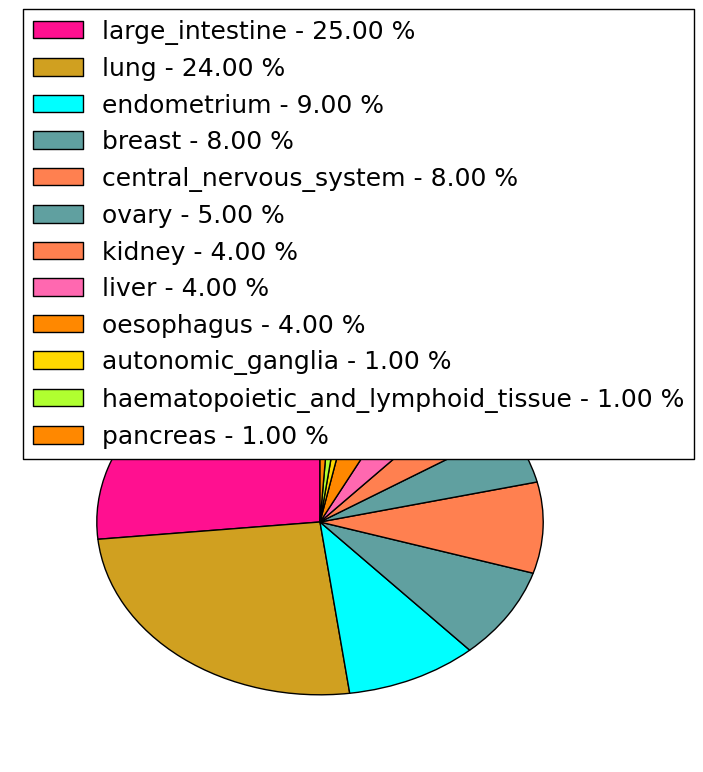 | 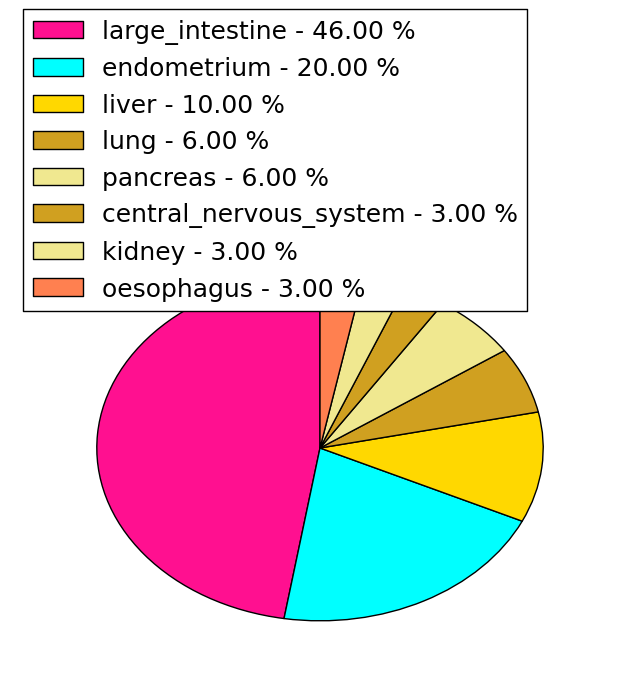 |
(# total SNVs=1) | (# total SNVs=0) |
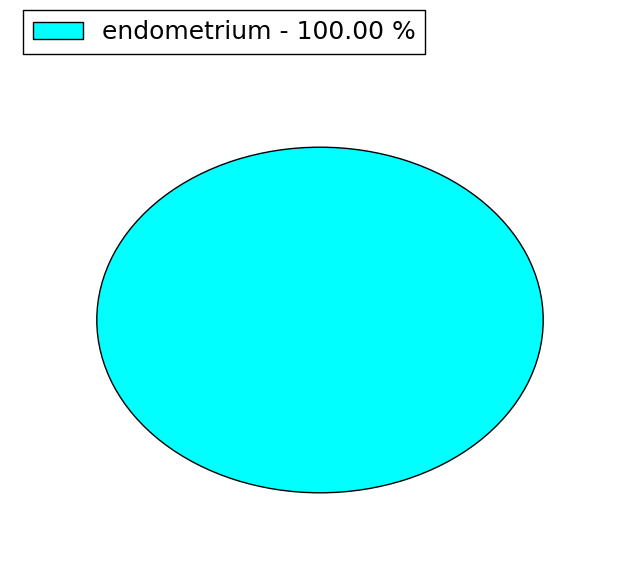 |
| Top |
| * When you move the cursor on each content, you can see more deailed mutation information on the Tooltip. Those are primary_site,primary_histology,mutation(aa),pubmedID. |
| GRCh37 position | Mutation(aa) | Unique sampleID count |
| chr15:40582855-40582855 | p.K1044N | 4 |
| chr15:40589767-40589767 | p.T426T | 3 |
| chr15:40583560-40583560 | p.R926R | 3 |
| chr15:40591421-40591421 | p.A197A | 2 |
| chr15:40582857-40582857 | p.K1044Q | 2 |
| chr15:40591423-40591423 | p.A197T | 2 |
| chr15:40589713-40589713 | p.? | 2 |
| chr15:40591081-40591081 | p.S256S | 2 |
| chr15:40587493-40587493 | p.? | 2 |
| chr15:40590504-40590504 | p.D359Y | 2 |
| Top |
|
 |
| Point Mutation/ Tissue ID | 1 | 2 | 3 | 4 | 5 | 6 | 7 | 8 | 9 | 10 | 11 | 12 | 13 | 14 | 15 | 16 | 17 | 18 | 19 | 20 |
| # sample | 3 | 2 | 1 | 16 | 4 | 5 | 1 | 1 | 12 | 5 | 4 | 13 | 7 | 1 | 11 | |||||
| # mutation | 3 | 2 | 1 | 15 | 4 | 5 | 1 | 1 | 12 | 5 | 4 | 15 | 8 | 1 | 14 | |||||
| nonsynonymous SNV | 1 | 2 | 1 | 7 | 3 | 3 | 1 | 1 | 9 | 5 | 4 | 6 | 6 | 1 | 8 | |||||
| synonymous SNV | 2 | 8 | 1 | 2 | 3 | 9 | 2 | 6 |
| cf) Tissue ID; Tissue type (1; BLCA[Bladder Urothelial Carcinoma], 2; BRCA[Breast invasive carcinoma], 3; CESC[Cervical squamous cell carcinoma and endocervical adenocarcinoma], 4; COAD[Colon adenocarcinoma], 5; GBM[Glioblastoma multiforme], 6; Glioma Low Grade, 7; HNSC[Head and Neck squamous cell carcinoma], 8; KICH[Kidney Chromophobe], 9; KIRC[Kidney renal clear cell carcinoma], 10; KIRP[Kidney renal papillary cell carcinoma], 11; LAML[Acute Myeloid Leukemia], 12; LUAD[Lung adenocarcinoma], 13; LUSC[Lung squamous cell carcinoma], 14; OV[Ovarian serous cystadenocarcinoma ], 15; PAAD[Pancreatic adenocarcinoma], 16; PRAD[Prostate adenocarcinoma], 17; SKCM[Skin Cutaneous Melanoma], 18:STAD[Stomach adenocarcinoma], 19:THCA[Thyroid carcinoma], 20:UCEC[Uterine Corpus Endometrial Carcinoma]) |
| Top |
| * We represented just top 10 SNVs. When you move the cursor on each content, you can see more deailed mutation information on the Tooltip. Those are primary_site, primary_histology, mutation(aa), pubmedID. |
| Genomic Position | Mutation(aa) | Unique sampleID count |
| chr15:40582856 | p.A197A,PLCB2 | 2 |
| chr15:40582857 | p.K1029N,PLCB2 | 2 |
| chr15:40591421 | p.K1029R,PLCB2 | 2 |
| chr15:40591081 | p.K1029E,PLCB2 | 2 |
| chr15:40582855 | p.S256S,PLCB2 | 2 |
| chr15:40591100 | p.T379T,PLCB2 | 1 |
| chr15:40581030 | p.R250L,PLCB2 | 1 |
| chr15:40587214 | p.N121N,PLCB2 | 1 |
| chr15:40594208 | p.T1133T,PLCB2 | 1 |
| chr15:40589781 | p.S949S,PLCB2 | 1 |
| * Copy number data were extracted from TCGA using R package TCGA-Assembler. The URLs of all public data files on TCGA DCC data server were gathered on Jan-05-2015. Function ProcessCNAData in TCGA-Assembler package was used to obtain gene-level copy number value which is calculated as the average copy number of the genomic region of a gene. |
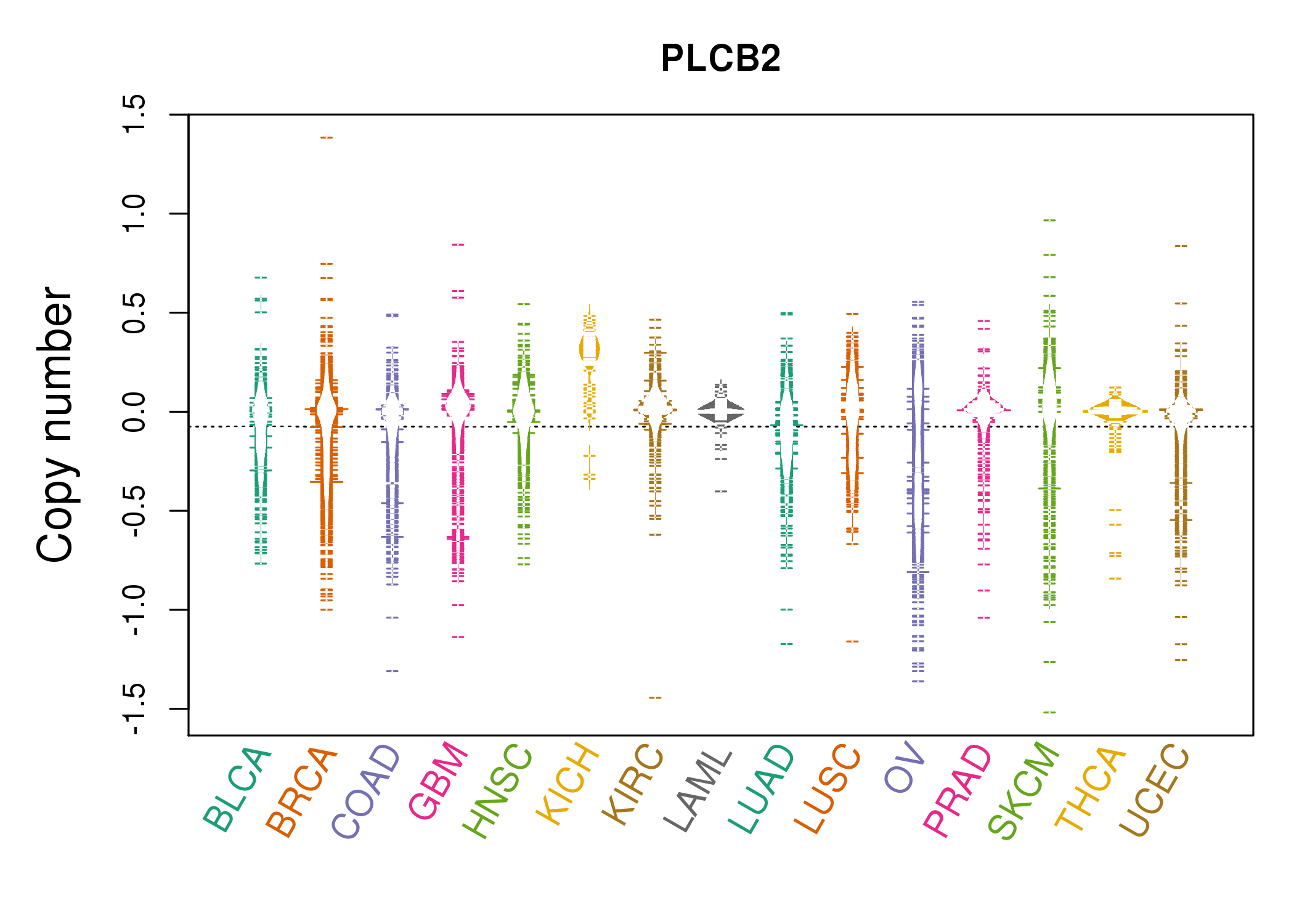 |
| cf) Tissue ID[Tissue type]: BLCA[Bladder Urothelial Carcinoma], BRCA[Breast invasive carcinoma], CESC[Cervical squamous cell carcinoma and endocervical adenocarcinoma], COAD[Colon adenocarcinoma], GBM[Glioblastoma multiforme], Glioma Low Grade, HNSC[Head and Neck squamous cell carcinoma], KICH[Kidney Chromophobe], KIRC[Kidney renal clear cell carcinoma], KIRP[Kidney renal papillary cell carcinoma], LAML[Acute Myeloid Leukemia], LUAD[Lung adenocarcinoma], LUSC[Lung squamous cell carcinoma], OV[Ovarian serous cystadenocarcinoma ], PAAD[Pancreatic adenocarcinoma], PRAD[Prostate adenocarcinoma], SKCM[Skin Cutaneous Melanoma], STAD[Stomach adenocarcinoma], THCA[Thyroid carcinoma], UCEC[Uterine Corpus Endometrial Carcinoma] |
| Top |
| Gene Expression for PLCB2 |
| * CCLE gene expression data were extracted from CCLE_Expression_Entrez_2012-10-18.res: Gene-centric RMA-normalized mRNA expression data. |
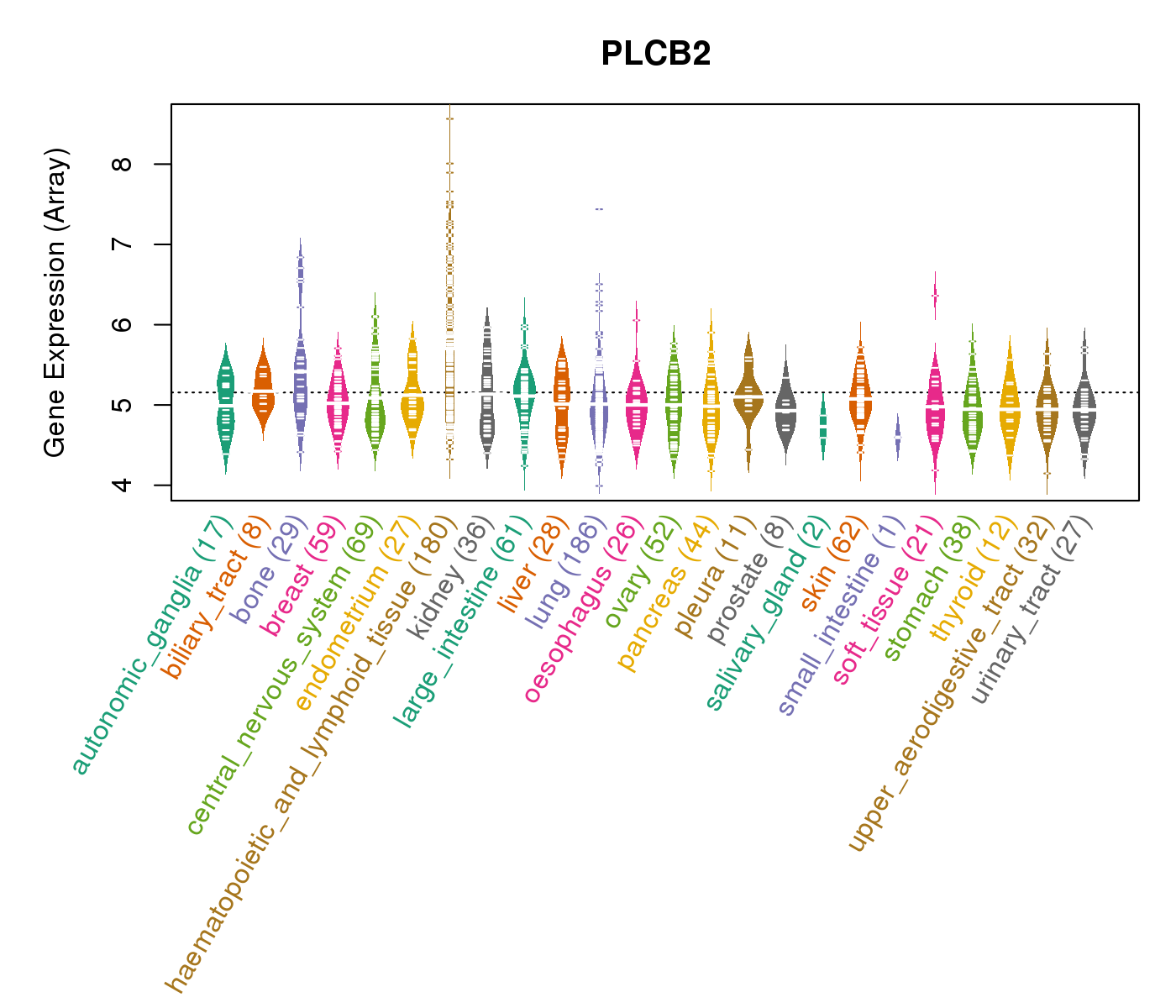 |
| * Normalized gene expression data of RNASeqV2 was extracted from TCGA using R package TCGA-Assembler. The URLs of all public data files on TCGA DCC data server were gathered at Jan-05-2015. Only eight cancer types have enough normal control samples for differential expression analysis. (t test, adjusted p<0.05 (using Benjamini-Hochberg FDR)) |
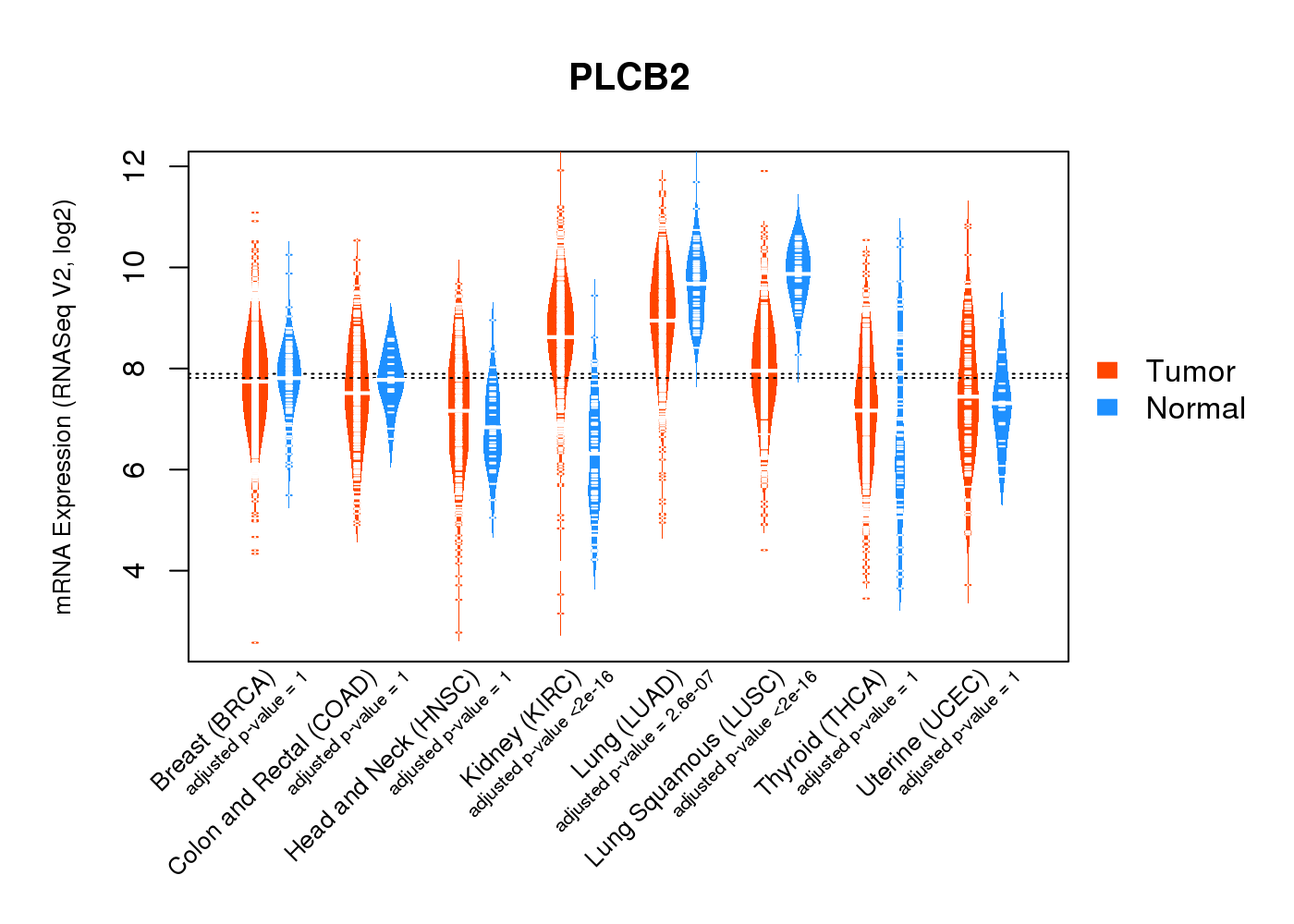 |
| Top |
| * This plots show the correlation between CNV and gene expression. |
: Open all plots for all cancer types
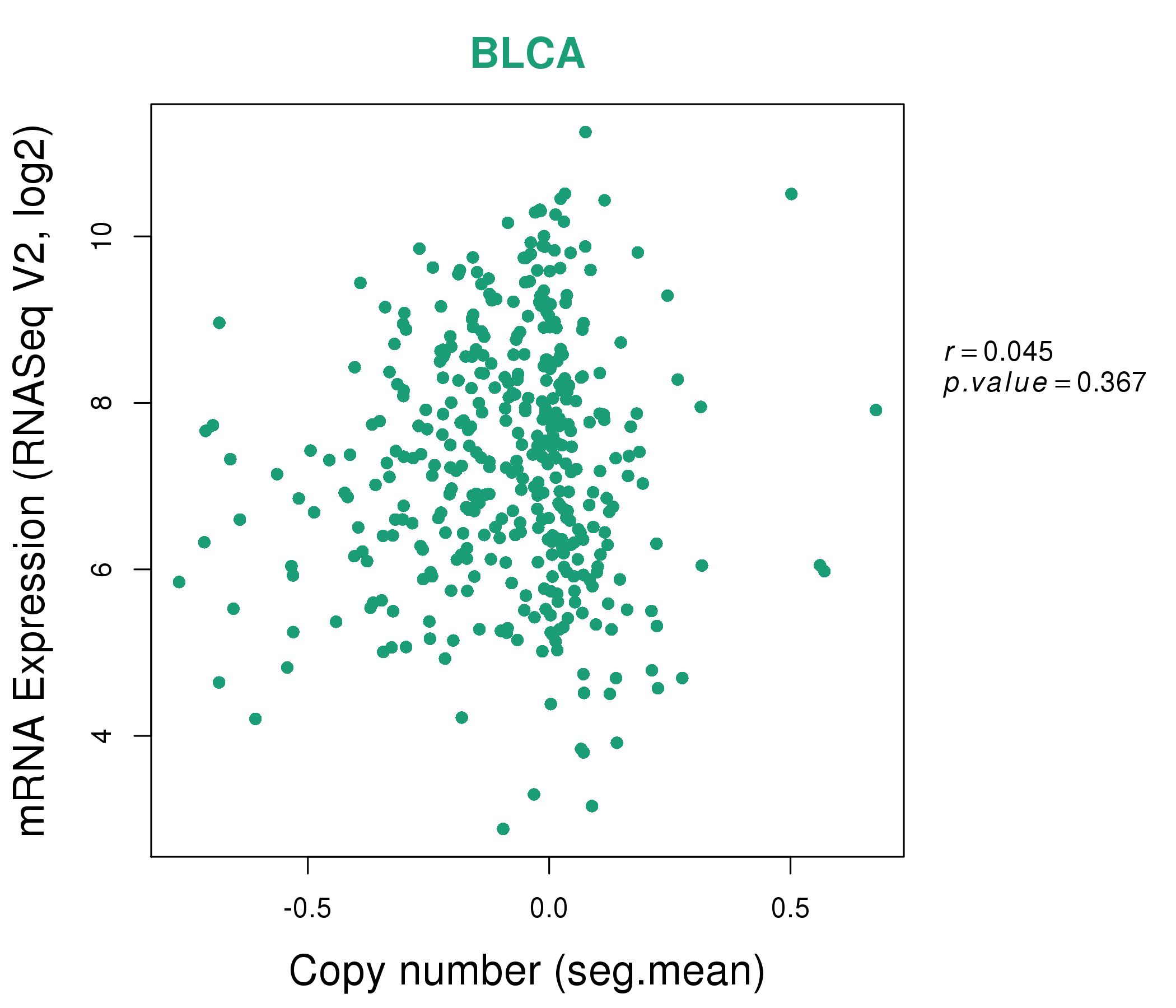 |
|
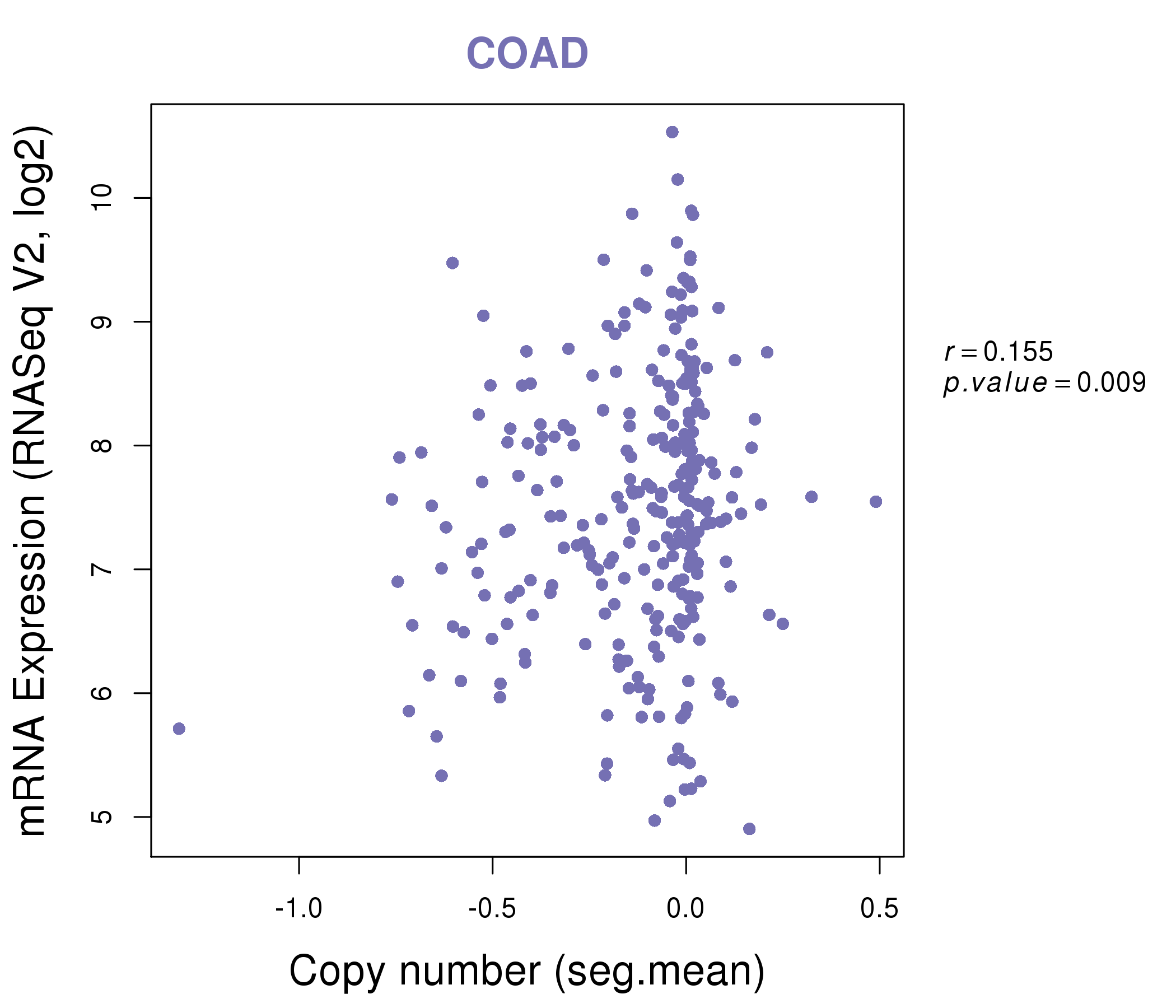 |
|
| Top |
| Gene-Gene Network Information |
| * Co-Expression network figures were drawn using R package igraph. Only the top 20 genes with the highest correlations were shown. Red circle: input gene, orange circle: cell metabolism gene, sky circle: other gene |
: Open all plots for all cancer types
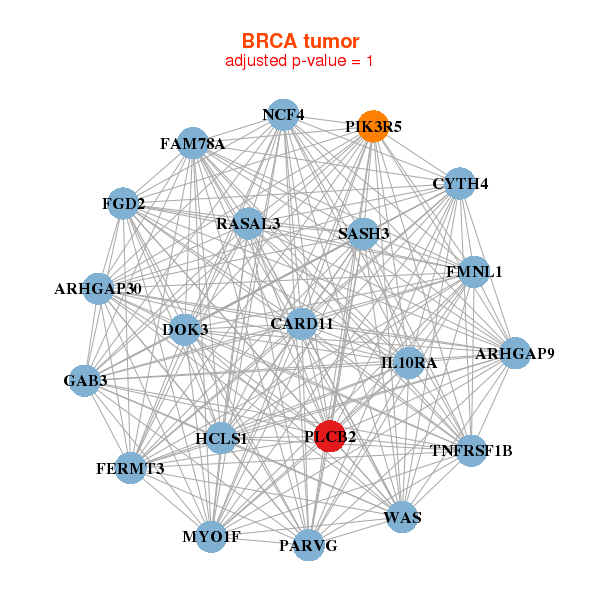 |
| ||||
| ARHGAP30,ARHGAP9,CARD11,CYTH4,DOK3,FAM78A,FERMT3, FGD2,FMNL1,GAB3,HCLS1,IL10RA,MYO1F,NCF4, PARVG,PIK3R5,PLCB2,RASAL3,SASH3,TNFRSF1B,WAS | ARHGAP30,ARHGAP9,SCIMP,CD53,DOK3,FERMT3,FGD2, GPSM3,IL18,IRF5,ITGAX,KCNAB2,LILRB1,LPXN, MYO1F,PARVG,PLCB2,SASH3,SYK,VAV1,WAS | ||||
 |
| ||||
| APBB1IP,ARHGAP25,ARHGAP30,ARHGAP9,BTK,C9orf139,CYTH4, DOCK2,FGD2,HCLS1,IL10RA,IL21R,ITGAL,MYO1G, NCKAP1L,PARVG,PIK3R5,PLCB2,RASAL3,SASH3,WAS | ADAM8,AKNA,BIN2,CARD9,CD4,CYTH4,DEF6, DOCK2,FAM78A,FERMT3,FGD3,IL10RA,MYO1F,MYO1G, NAIP,NDST2,PARVG,PIK3R6,PLCB2,PREX1,VAV1 |
| * Co-Expression network figures were drawn using R package igraph. Only the top 20 genes with the highest correlations were shown. Red circle: input gene, orange circle: cell metabolism gene, sky circle: other gene |
: Open all plots for all cancer types
| Top |
: Open all interacting genes' information including KEGG pathway for all interacting genes from DAVID
| Top |
| Pharmacological Information for PLCB2 |
| DB Category | DB Name | DB's ID and Url link |
| * Gene Centered Interaction Network. |
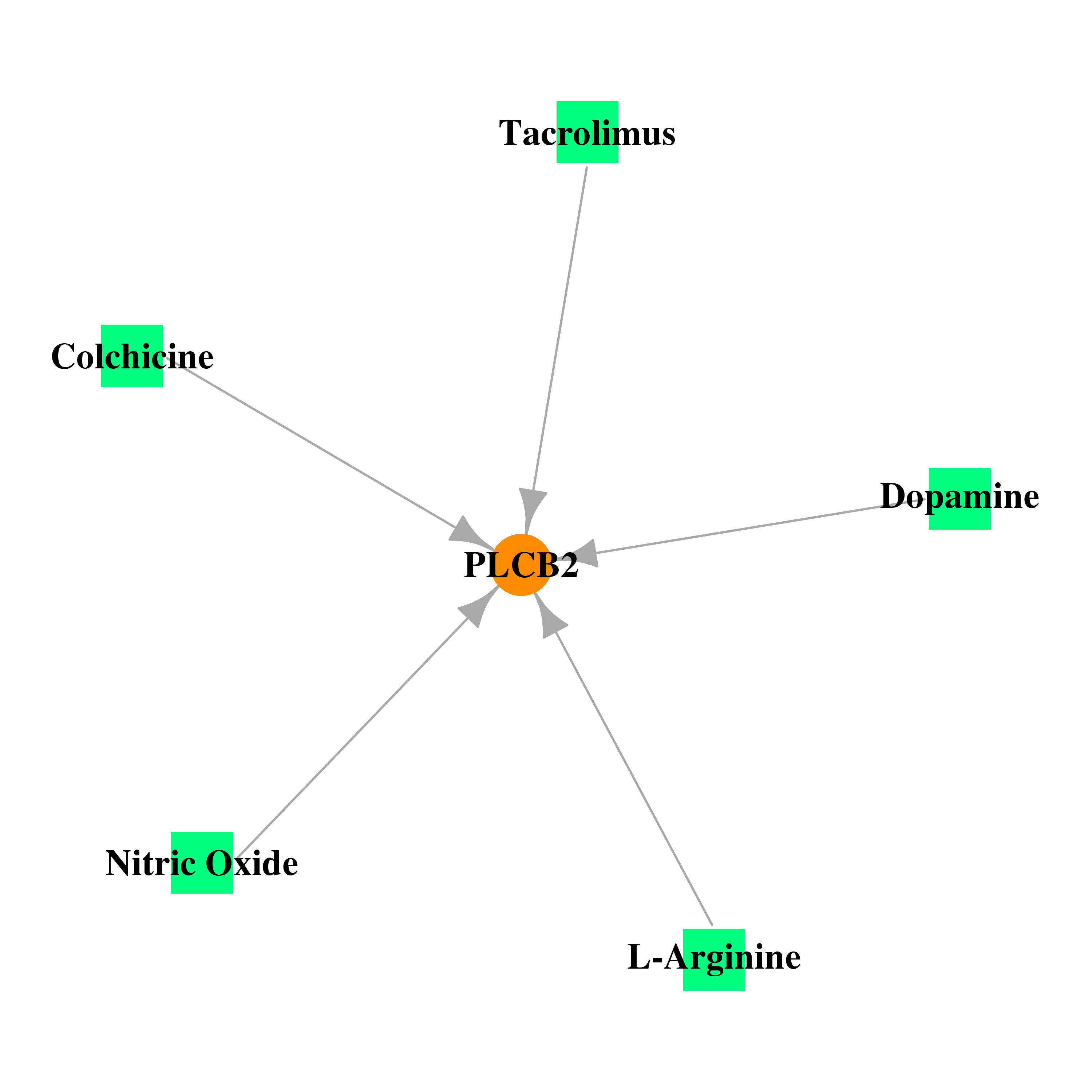 |
| * Drug Centered Interaction Network. |
| DrugBank ID | Target Name | Drug Groups | Generic Name | Drug Centered Network | Drug Structure |
| DB01394 | phospholipase C, beta 2 | approved | Colchicine | 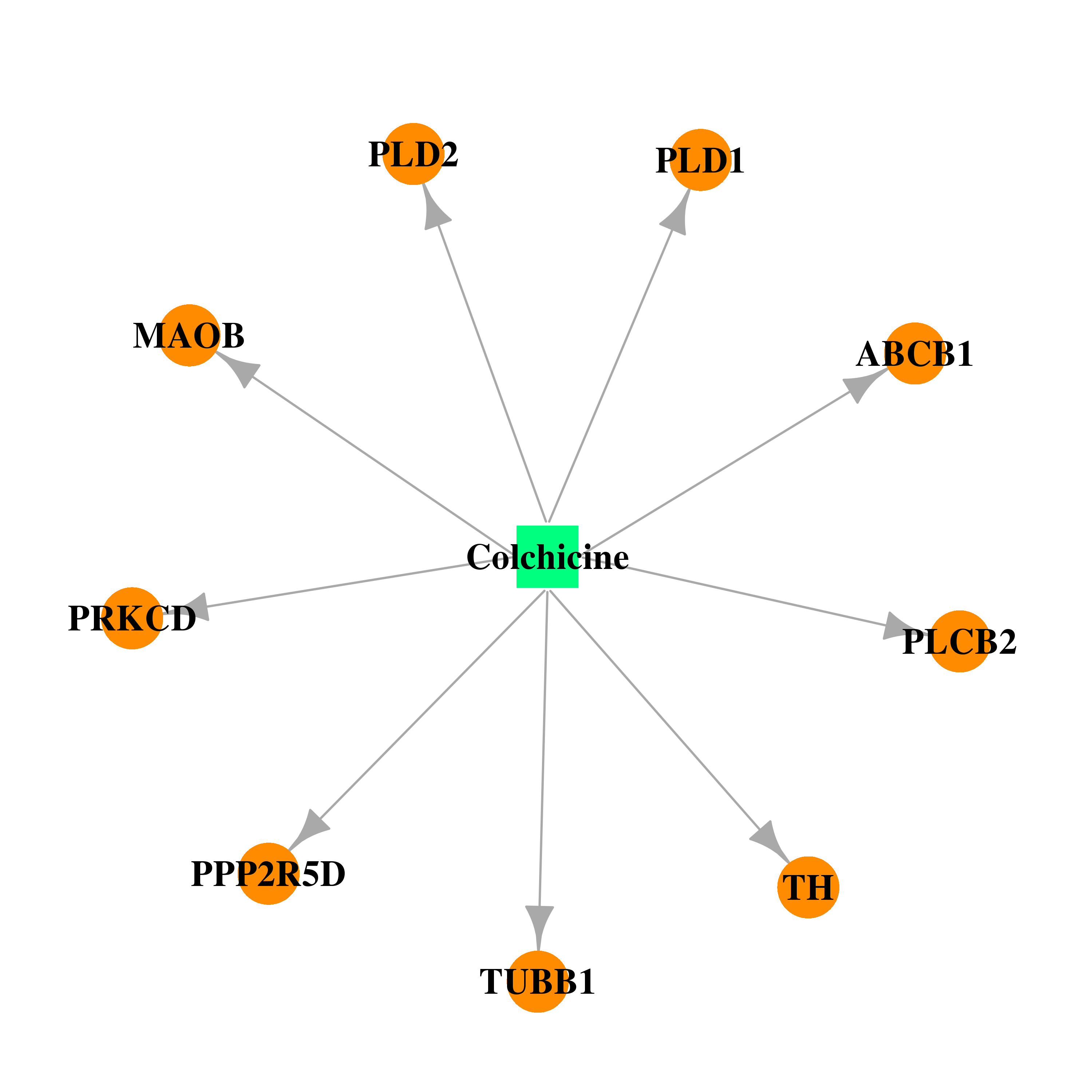 | 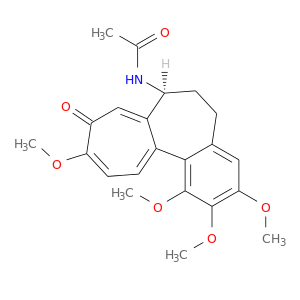 |
| DB00988 | phospholipase C, beta 2 | approved | Dopamine | 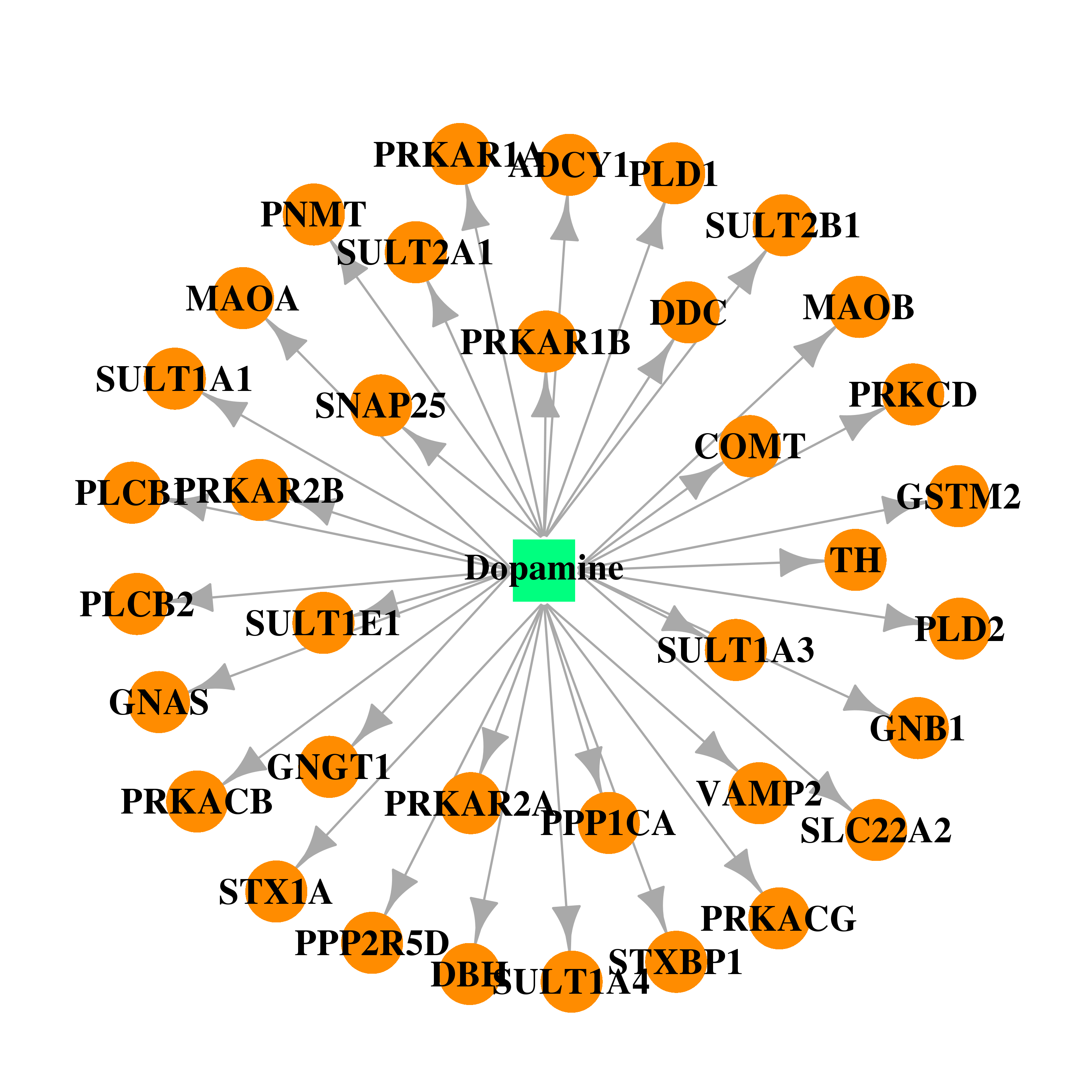 | 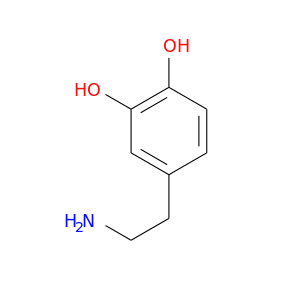 |
| DB00864 | phospholipase C, beta 2 | approved; investigational | Tacrolimus |  |  |
| DB00125 | phospholipase C, beta 2 | approved; nutraceutical | L-Arginine | 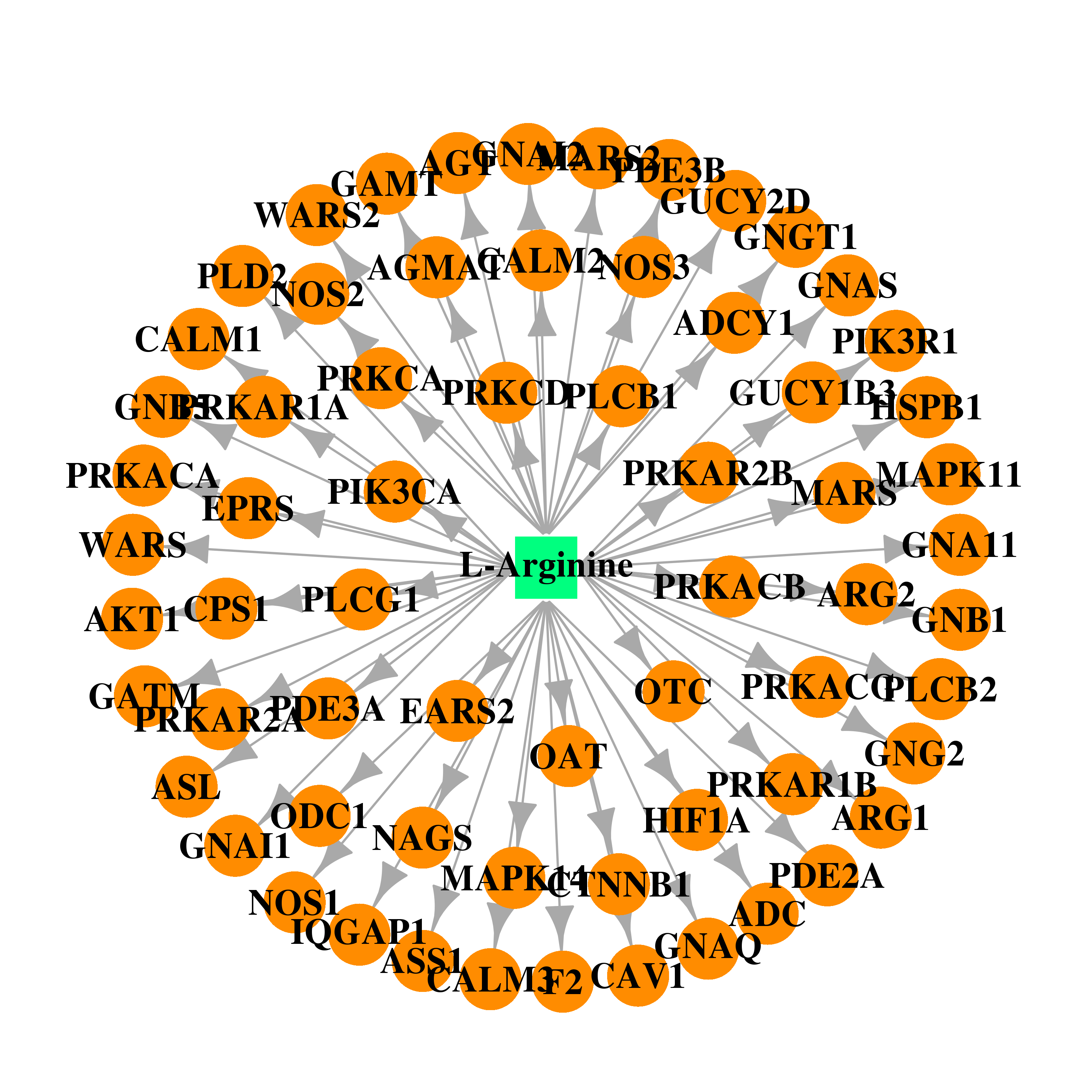 | 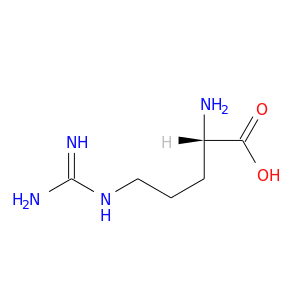 |
| DB00435 | phospholipase C, beta 2 | approved | Nitric Oxide | 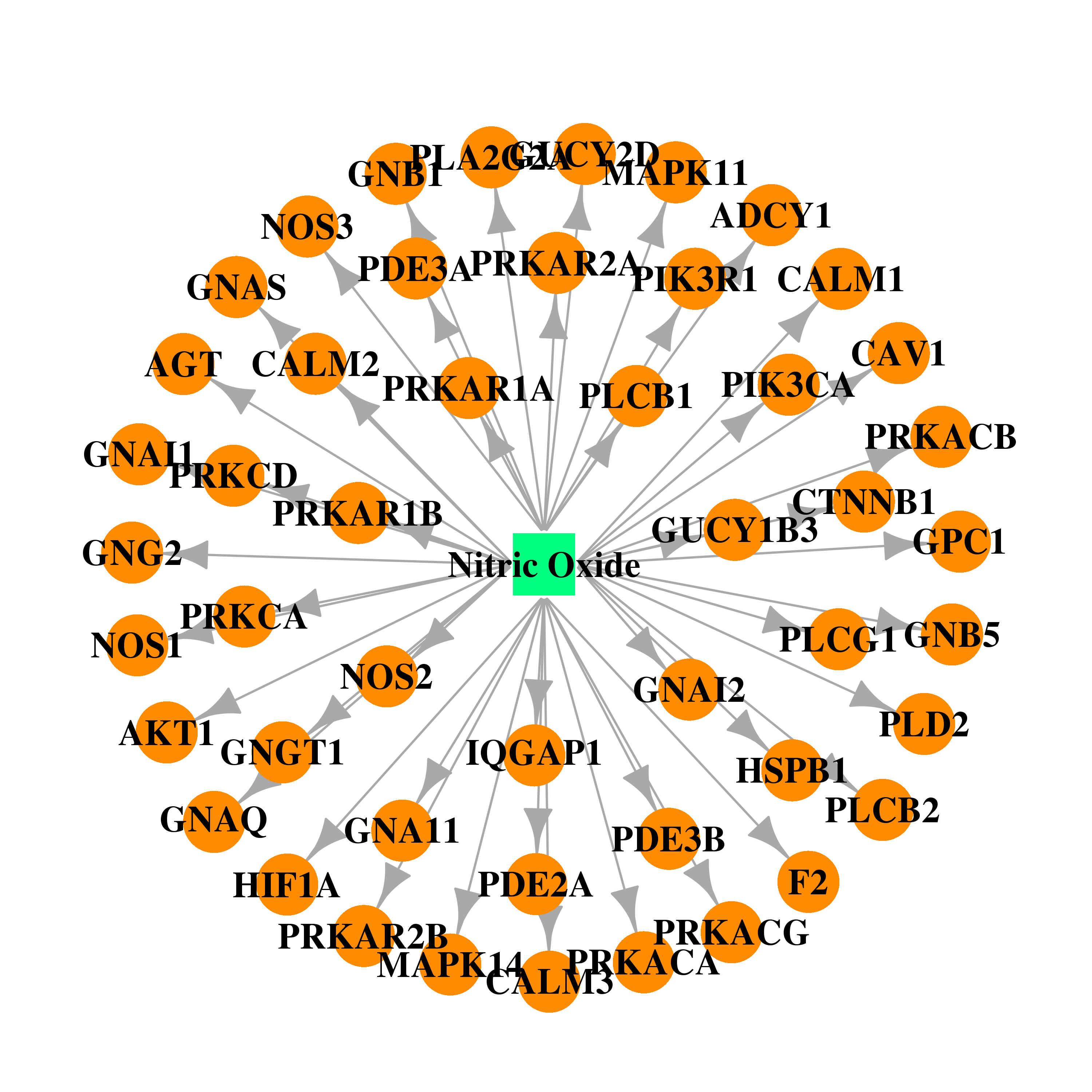 |  |
| Top |
| Cross referenced IDs for PLCB2 |
| * We obtained these cross-references from Uniprot database. It covers 150 different DBs, 18 categories. http://www.uniprot.org/help/cross_references_section |
: Open all cross reference information
|
Copyright © 2016-Present - The Univsersity of Texas Health Science Center at Houston @ |







